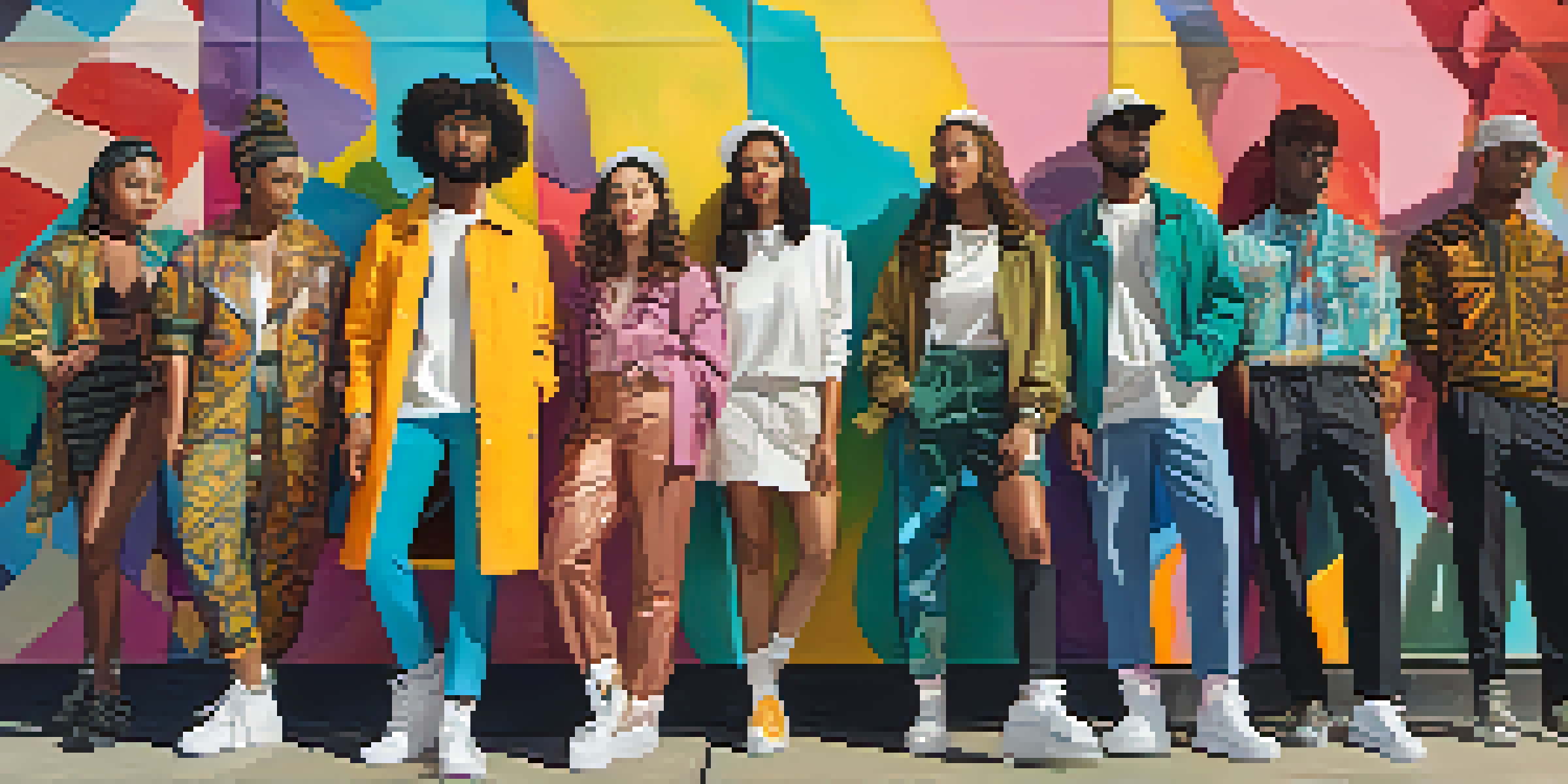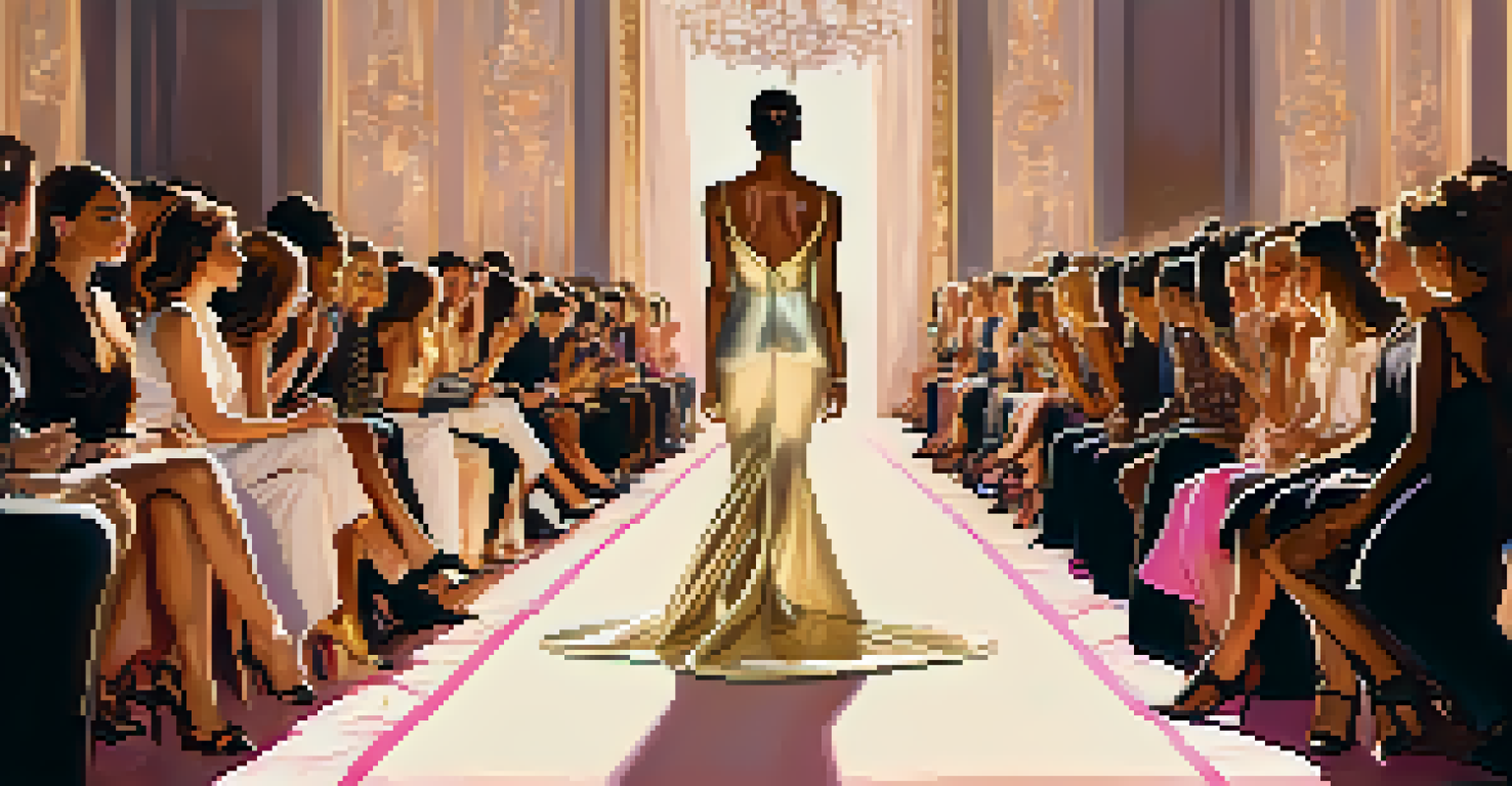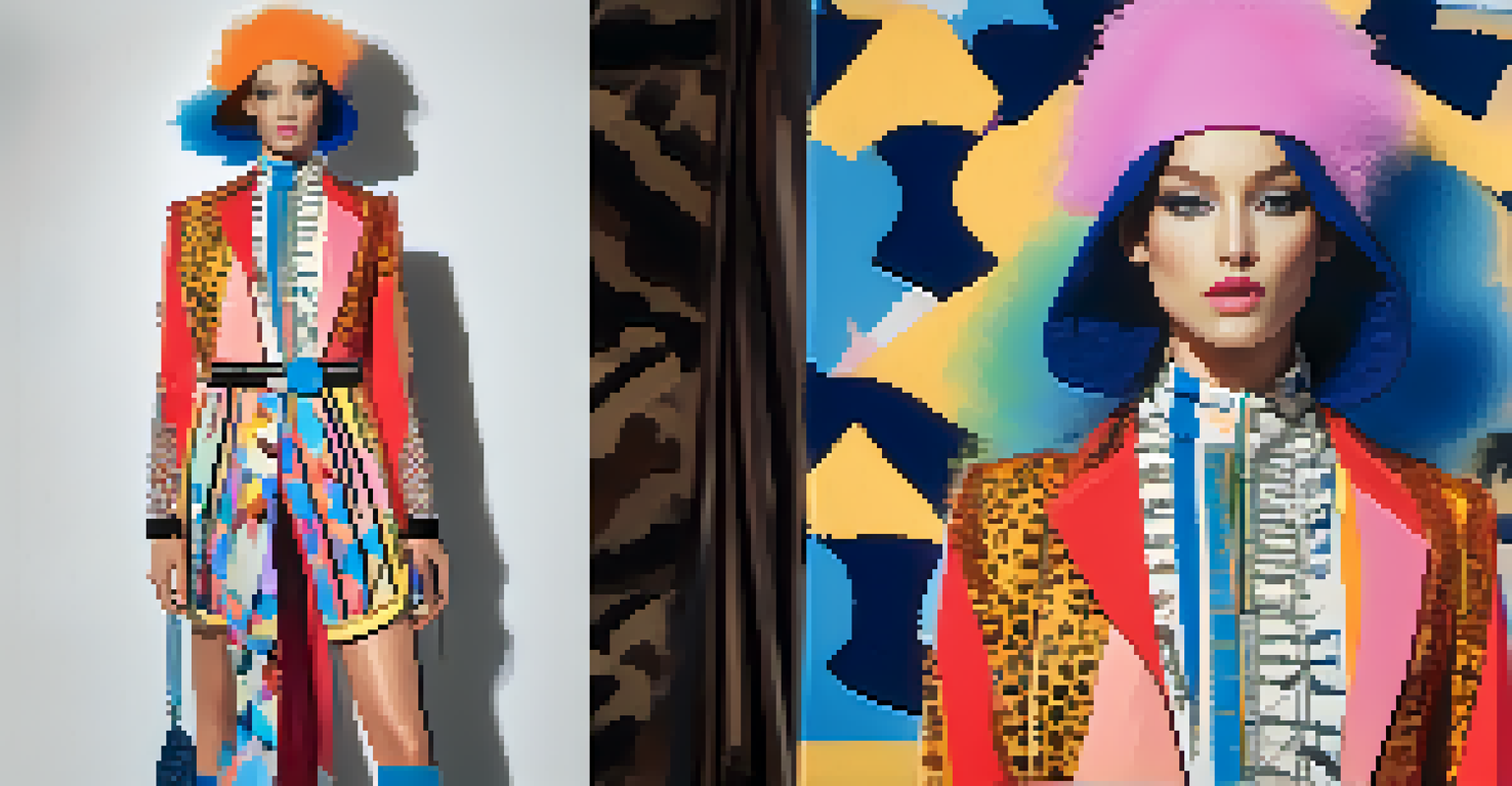Gender Fluidity in Luxury Fashion: Trends and Acceptance

Understanding Gender Fluidity in Fashion Context
Gender fluidity is a term that refers to a flexible range of gender identities that may change over time. In fashion, this concept allows individuals to express themselves beyond the traditional binary of male and female clothing. Designers are increasingly recognizing that fashion should celebrate personal identity, rather than conform to societal norms.
Fashion is a form of self-expression that allows individuals to convey their identity beyond societal norms.
This shift towards inclusivity is not just a trend but reflects a deeper cultural transformation. As society becomes more accepting of diverse gender expressions, the fashion industry responds by creating collections that cater to all identities. The result is a vibrant tapestry of styles that defy conventional classifications.
For instance, brands like Gucci and Balenciaga have embraced gender fluidity, showcasing collections that blend traditionally masculine and feminine elements. By doing so, they encourage wearers to explore their own identities through fashion, fostering a sense of freedom and self-expression.
Key Trends Influencing Gender Fluid Fashion
Several trends are shaping the landscape of gender fluid fashion today. One prominent trend is the rise of unisex clothing lines, which offer styles that appeal to a broader audience without gender constraints. These collections often feature versatile silhouettes that can be worn by anyone, regardless of gender identity.

Additionally, the use of bold colors and patterns is becoming increasingly popular in gender fluid designs. This departure from the traditional muted palettes often associated with men's and women's clothing allows wearers to express their individuality boldly. Fashion is evolving into a celebration of diversity, where all colors and styles are welcome.
Gender Fluidity Redefines Fashion
The fashion industry is evolving to embrace gender fluidity, allowing individuals to express their identities beyond traditional male and female clothing.
Moreover, collaborations between brands and gender-diverse influencers are amplifying these trends. By partnering with individuals who embody gender fluidity, brands not only reach wider audiences but also gain authentic insights into the needs and desires of their customers.
The Role of Designers in Promoting Acceptance
Designers play a crucial role in promoting acceptance of gender fluidity in the fashion world. By creating inclusive collections, they signal to consumers that fashion should not be limited by gender norms. This approach not only attracts a more diverse clientele but also encourages other designers to rethink their own practices.
Inclusivity in fashion is not just a trend; it is a reflection of our evolving understanding of gender and identity.
For example, designers like Harris Reed have made headlines for their bold, gender-fluid designs that challenge traditional fashion boundaries. Their work not only showcases creativity but also sends a powerful message about the importance of inclusivity in the industry.
Furthermore, the visibility of gender fluidity on the runway has a ripple effect on society's perceptions of gender. As more designers embrace this concept, they help to normalize gender fluidity, making it a part of everyday conversations about identity and self-expression.
Challenges Still Facing Gender Fluid Fashion
Despite the progress made, challenges remain for gender fluid fashion. Many mainstream retailers still focus on traditional gender categories, limiting choices for those who identify outside the binary. This lack of options can be frustrating for consumers seeking to express their gender identity authentically.
Additionally, not all brands are equipped to handle the nuances of gender fluidity in their marketing strategies. Misrepresentation or superficial attempts at inclusivity can lead to backlash from consumers who value authenticity. It’s crucial for brands to engage thoughtfully with gender diversity rather than merely jumping on the bandwagon.
Unisex Clothing Gains Popularity
The rise of unisex clothing lines reflects a growing demand for styles that are inclusive and accessible to a broader audience.
Moreover, pricing can be a barrier; luxury fashion often comes with a hefty price tag, which may exclude many potential customers. Ensuring that gender fluid options are accessible to a broader audience is essential for fostering true acceptance and inclusivity.
The Impact of Social Media on Gender Fluid Trends
Social media has become a powerful platform for promoting gender fluid fashion trends. Influencers and activists use these platforms to share their personal styles, creating visibility for non-binary and gender-fluid identities. Instagram and TikTok, in particular, have enabled users to express their individuality and connect with like-minded communities.
These platforms also serve as a space for brands to showcase their gender-fluid collections, reaching a wider audience than traditional advertising ever could. Engaging content, such as styling tips or behind-the-scenes looks at gender fluid collections, can resonate deeply with consumers seeking representation.
Moreover, social media allows for real-time feedback from consumers, which can guide brands in their design and marketing strategies. This interaction fosters a sense of community and encourages brands to stay attuned to the evolving needs of their audience.
Consumer Response to Gender Fluid Collections
The consumer response to gender fluid collections has been overwhelmingly positive, reflecting a growing desire for inclusivity in fashion. Many shoppers appreciate the opportunity to choose clothing that resonates with their identity, rather than being confined to traditional gender categories. This shift signifies a broader acceptance and understanding of gender diversity in society.
Surveys indicate that a significant portion of consumers are more likely to support brands that embrace gender fluidity, showcasing the potential market for inclusive fashion. This trend presents an exciting opportunity for brands to innovate and expand their offerings to meet the diverse needs of their consumer base.
Social Media Amplifies Inclusivity
Social media platforms are crucial in promoting gender fluid fashion, providing visibility and fostering community among diverse identities.
Additionally, word-of-mouth recommendations from satisfied customers can drive interest in gender fluid collections, creating a positive feedback loop. As more individuals feel represented and empowered by these styles, the demand for gender-inclusive fashion continues to grow.
The Future of Gender Fluidity in Luxury Fashion
As we look to the future, the evolution of gender fluidity in luxury fashion appears promising. With increasing awareness and acceptance, it’s likely that more brands will prioritize inclusivity in their designs and marketing strategies. This shift will not only shape the collections we see on runways but also redefine the very essence of luxury fashion.
Moreover, the collaboration between brands and gender-diverse voices will likely continue to flourish. By amplifying these perspectives, the fashion industry can create a richer tapestry of creativity that reflects the diverse society we live in. This collaboration will also help brands foster deeper connections with their audiences.

Ultimately, the future of gender fluidity in fashion is about more than just clothing; it’s about embracing and celebrating individuality. As the industry continues to evolve, we can anticipate a more inclusive, expressive, and vibrant fashion landscape.